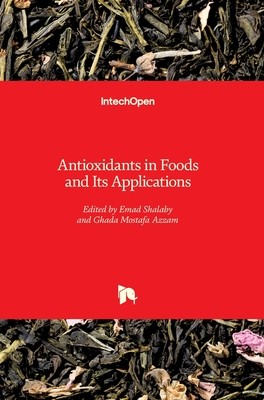
- We will send in 10–14 business days.
- Publisher: IntechOpen
- ISBN-10: 178923378X
- ISBN-13: 9781789233780
- Format: 17 x 24.4 x 1.1 cm, kieti viršeliai
- Language: English
- SAVE -10% with code: EXTRA
Antioxidants in Foods and Its Applications (e-book) (used book) | bookbook.eu
Reviews
Description
Free radicals are atoms or molecules containing unpaired electrons. Damage occurs when the free radical encounters another molecule and seeks to find another electron to pair its unpaired electron. Free radicals can cause mutation in different biological compounds such as protein, nucleic acids, and lipids, and the damage caused by the free radicals lead to various diseases (cancer, cardiovascular disease, aging, etc.). Antioxidants are helpful in reducing and preventing damage from free radical reactions because of their ability to donate electrons, which neutralize the radical without forming another. Ascorbic acid, for example, can lose an electron to a free radical and remain stable itself by passing its unstable electron around the antioxidant molecule. Unfortunately, new data indicate that the synthetic antioxidants used in the industry could have carcinogenic effects on human cells, thus fueling an intense search for new, natural, and efficient antioxidants. Therefore, the current book discusses the role and source of antioxidant compounds in nutrition and diets. Also, the current book includes nine chapters contributed by experts around the world, and the chapters are categorized into two sections: "Antioxidant Compounds and Biological Activities" and "Natural Antioxidants and Applications."
EXTRA 10 % discount with code: EXTRA
The promotion ends in 21d.08:32:38
The discount code is valid when purchasing from 10 €. Discounts do not stack.
- Publisher: IntechOpen
- ISBN-10: 178923378X
- ISBN-13: 9781789233780
- Format: 17 x 24.4 x 1.1 cm, kieti viršeliai
- Language: English English
Free radicals are atoms or molecules containing unpaired electrons. Damage occurs when the free radical encounters another molecule and seeks to find another electron to pair its unpaired electron. Free radicals can cause mutation in different biological compounds such as protein, nucleic acids, and lipids, and the damage caused by the free radicals lead to various diseases (cancer, cardiovascular disease, aging, etc.). Antioxidants are helpful in reducing and preventing damage from free radical reactions because of their ability to donate electrons, which neutralize the radical without forming another. Ascorbic acid, for example, can lose an electron to a free radical and remain stable itself by passing its unstable electron around the antioxidant molecule. Unfortunately, new data indicate that the synthetic antioxidants used in the industry could have carcinogenic effects on human cells, thus fueling an intense search for new, natural, and efficient antioxidants. Therefore, the current book discusses the role and source of antioxidant compounds in nutrition and diets. Also, the current book includes nine chapters contributed by experts around the world, and the chapters are categorized into two sections: "Antioxidant Compounds and Biological Activities" and "Natural Antioxidants and Applications."


Reviews